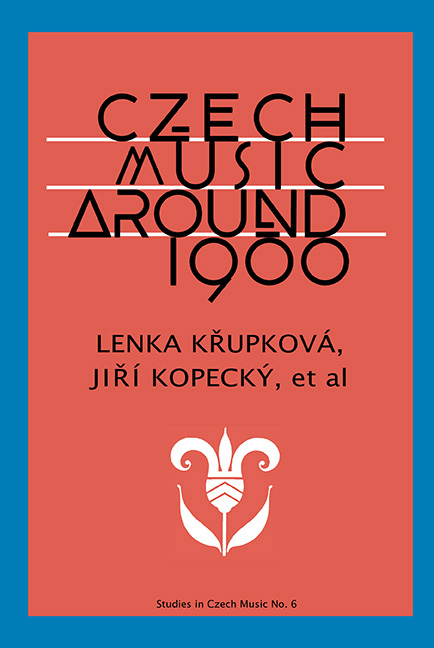Book contents
- Frontmatter
- Table of Contents
- Introductory Remarks on the Conception of This Book
- Flowers in the Graveyard, Tombstones in the Garden
- The “Other World” of Music at the Turn of the Century
- In the Footsteps of Tradition: The Spirit of Romanticism
- 1892: The International Success of Smetana's The Bartered Bride
- A Rare Meeting of Minds in Kvapil's and Dvořák's Rusalka: The Background, the Artistic Result, and Response by the World of Opera
- Delayed Subjective Romanticism in Czech Music: Novák as a Romantic
- Čapek's Feminism and Janáček's Femme Fatale: Notes on Traditional Opera Aesthetics in Janáček's Opera The Makropulos Case
- Czech Music at the Heart of European Music round 1900
- The Clash with Compositional Issues of European Music
- Index
- List of Illustrations
- About the Authors
- List of Sources Cited
Delayed Subjective Romanticism in Czech Music: Novák as a Romantic
from In the Footsteps of Tradition: The Spirit of Romanticism
- Frontmatter
- Table of Contents
- Introductory Remarks on the Conception of This Book
- Flowers in the Graveyard, Tombstones in the Garden
- The “Other World” of Music at the Turn of the Century
- In the Footsteps of Tradition: The Spirit of Romanticism
- 1892: The International Success of Smetana's The Bartered Bride
- A Rare Meeting of Minds in Kvapil's and Dvořák's Rusalka: The Background, the Artistic Result, and Response by the World of Opera
- Delayed Subjective Romanticism in Czech Music: Novák as a Romantic
- Čapek's Feminism and Janáček's Femme Fatale: Notes on Traditional Opera Aesthetics in Janáček's Opera The Makropulos Case
- Czech Music at the Heart of European Music round 1900
- The Clash with Compositional Issues of European Music
- Index
- List of Illustrations
- About the Authors
- List of Sources Cited
Summary
Vítězslav (real name Viktor) Novák (1870-1949) was one of the best pupils of Antonín Dvořák, with whom he studied at the conservatory in Prague in 1891 and 1892. In the generation of Czech composers who entered into Czech culture with their works around 1900 he occupies a prominent position. His early works do not depart from an epigonic romantic style, showing signs of the influence of such composers as Pyotr Ilyich Tchaikovsky, Johannes Brahms, and his teacher Dvořák. On his trips from Prague to the east during summer vacation periods Novák found the most important source for his music in Moravian and Slovak folklore. After he transcended a certain ethnographic descriptiveness, for which he was chided in his first compositions having such inspirations, melodic-rhythmic components of folk music continued to be represented even in his later works. He applied the specific features of his new style first in chamber works and piano music, in which genres his masterpieces are mainly works composed from 1899 to 1910: the Trio in D minor “quasi una ballata,” Op. 27 from 1902, his first two string quartets (1899 and 1905), his Sonata eroica for piano (1900), and the sets of piano pieces Písně zimních nocí (Songs of Winter Nights, 1903) and Pan (1910). But already in the first years of the twentieth century he also wrote large symphonic works—the symphonic poems V Tatrách (In the Tatra Mountains, composed 1902, revised 1907), O věčné touze (Of Eternal Longing, 1905), and Toman a lesní panna (Toman and the Forest Maiden, 1907)—then above all the cantata Bouře (The Storm, 1910), whose premiere by the Philharmonic Society in Brno in 1910 was a major event in the whole Czech musical world.
Within the Austro-Hungarian monarchy Novák was able to earn a reputation relatively early on as one of the best-known composers, whose works were premiered in the Czech lands but soon performed elsewhere as well. His Second String Quartet even had its world premiere in Berlin, in 1905; Prague heard this work only a year later. In 1909 the Vienna Philharmonic performed In the Tatra Mountains, and in 1914 a three-day series of concerts of his works was given in that city. Highly celebrated was the Vienna premiere of The Storm, given by the Tonkünstler-Orchester in 1913.
German publishers soon showed interest in Novák's works.
- Type
- Chapter
- Information
- Czech Music around 1900 , pp. 81 - 92Publisher: Boydell & BrewerPrint publication year: 2017



